Should I Feed My Dog Before or After a Walk?
It’s something we, as owners, might not consider or spend too much time thinking about but managing their activity levels around feeding time is very important. It’s similar to humans in that you wouldn’t have a big bulky dinner and then immediately go to the gym. You don’t see marathon runners finishing a race and then inhaling a whole meal.
Dogs are very similar in that way but don’t always manage themselves and make the best decisions. Dogs will usually choose to have a nap after a meal but if you take them for a walk, they’re not going to be avoiding running around because they just had a meal.
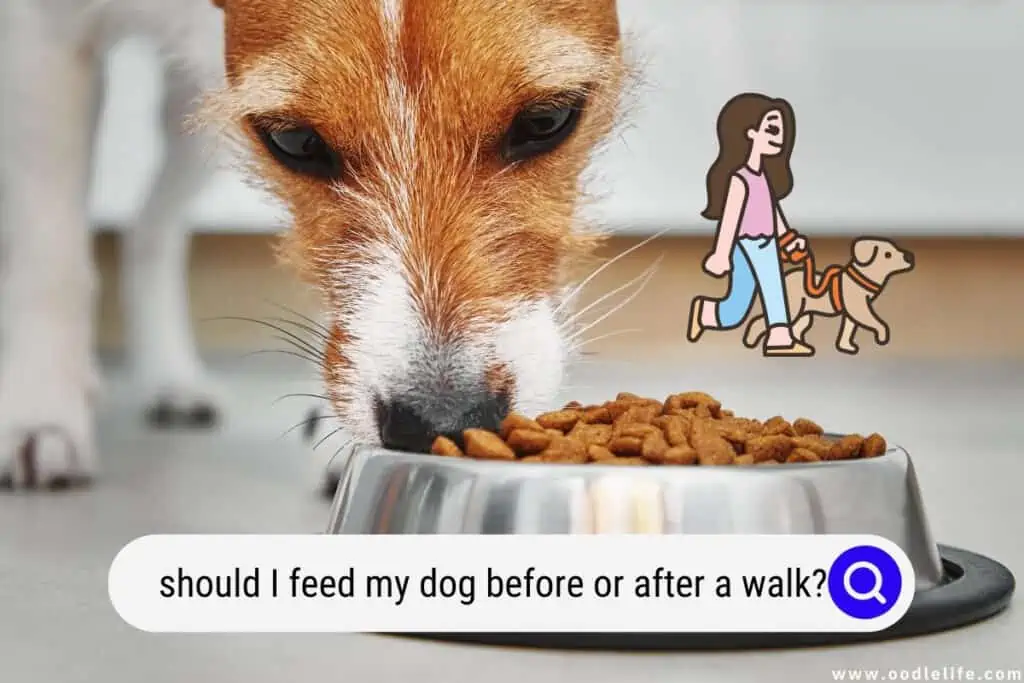
Does it matter if you feed your dog before or after a walk?
In short, it does matter if you feed your dog before or after a walk. If you exercise your dog too soon after or before a meal then there are some risks associated that can really affect their gastrointestinal tract. We might get a little bit of indigestion and your dogs might be similar however they are at risk of some pretty serious ailments if we don’t feed them on a proper schedule that prevents these.
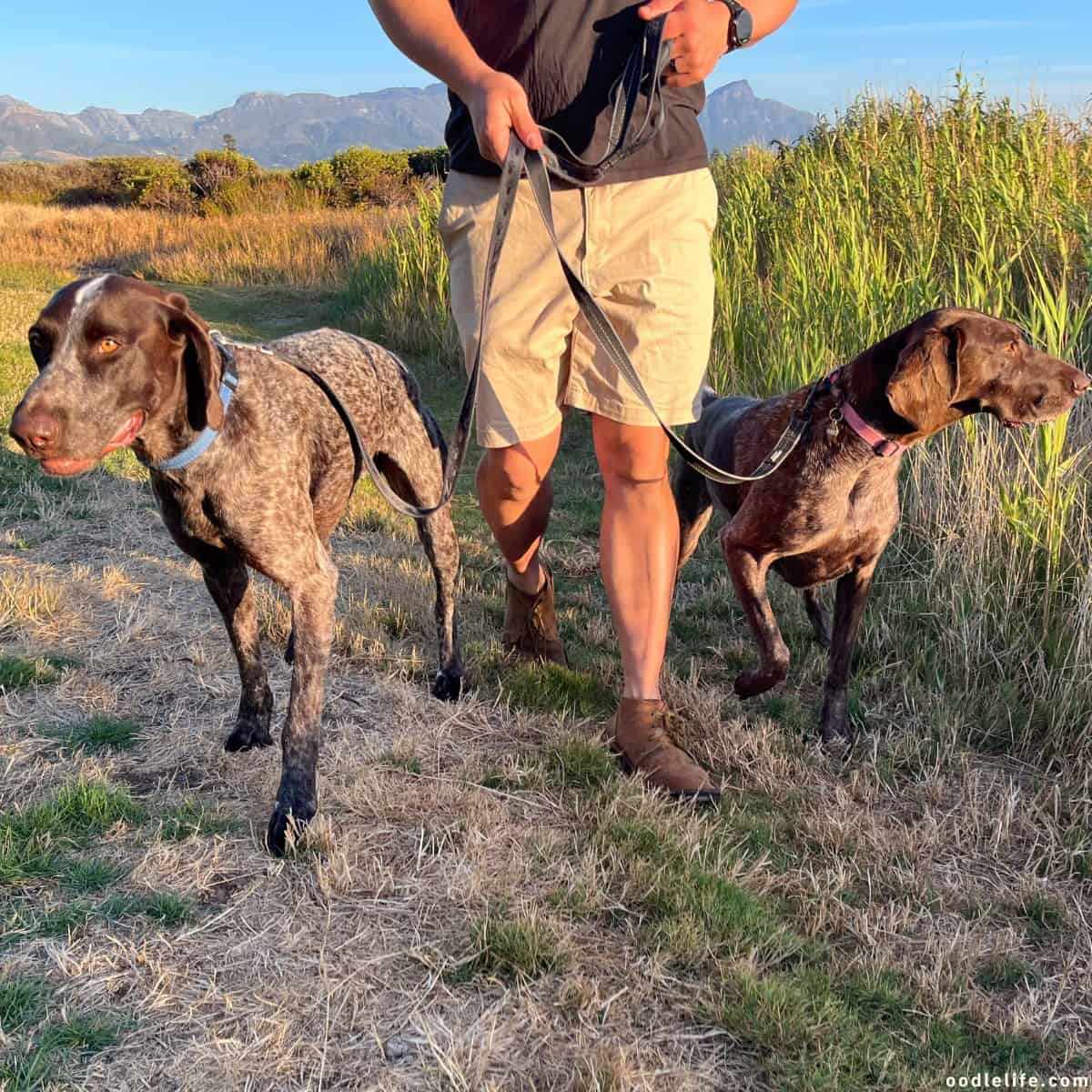
One of the biggest risks of feeding your dog too close to exercise is that they run the risk of developing bloat or gastric dilation and volvulus (GDV).
What are Bloat and GDV?
Bloat and gastric dilation and volvulus are ailments that tend to go hand in hand when it comes to risks your dog might face when eating too close to when they exert themselves physically.
Bloat gained its name from one of the most obvious symptoms of the illness. Their stomach will usually bloat up and become distended as it fills with food and air. Depending on the severity of the bloat, it can be fatal within a few hours if not treated properly which is why it’s so important to have a proper management plan in place when feeding your dog.
Bloat causes the stomach to swell which can cause injury if it pushes against other organs or the diaphragm, this swelling is what causes the symptoms.
Gastric dilation and volvulus occurs when the stomach twists which can escalate the seriousness and how quickly you need to get your dog to see the vet. When the stomach twists, it can cause injury to their other organs and makes it impossible for any food or gas to leave through the small intestines. In the most severe cases, a dog’s stomach can rupture.
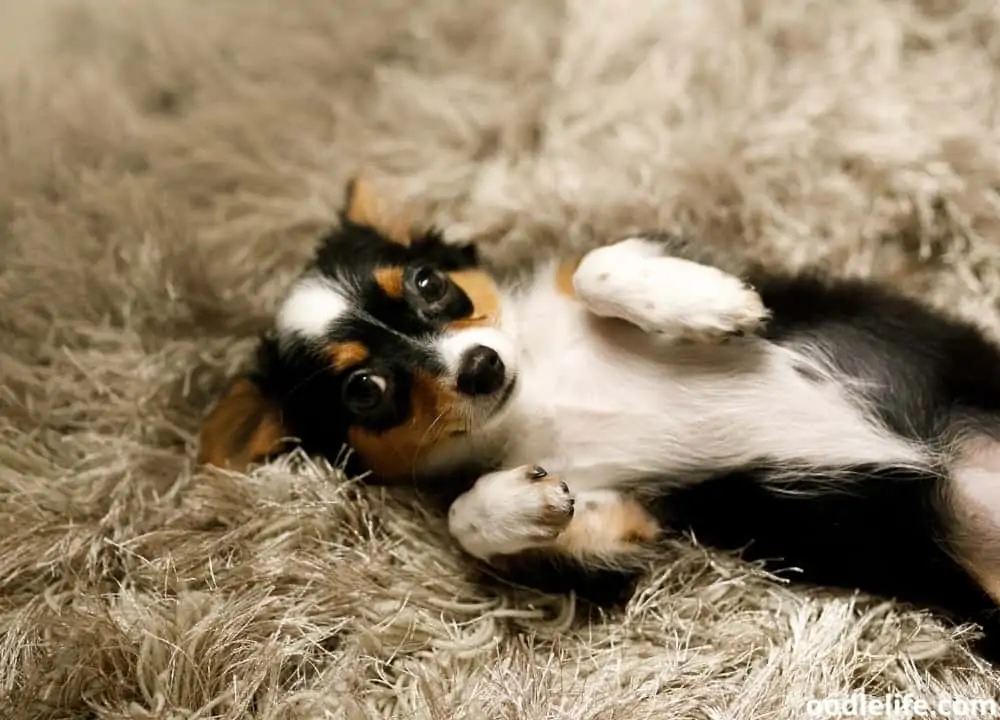
Symptoms of Bloat/GDV
In very early cases of bloat, you may not notice any swelling of the abdomen as signs can be quite subtle. You might just notice that your dog becomes suddenly unsettled, they might pace around, maybe lie down but then get back up again because even in the early stages, bloat is very uncomfortable and painful. To ease the tension on their abdomen they might pick positions that are more comfortable like lying with their front half down on the ground and their back legs still in a standing position to keep their stomachs from resting on the floor.
It might look like they’re doing a bit of doggy yoga.
Progression of bloat and GDV can cause retching or dry heaving. As the food they’ve eaten fails to pass through their stomach and their stomach becomes increasingly uncomfortable, dogs will often try to be sick. If they vomit their food, it’s less likely to be a symptom of bloat or GDV, when they are suffering from these, they’re more likely to vomit up bile as the food is trapped in their increasingly painful stomach.
Dogs who are very uncomfortable around their abdomen may be sensitive to the touch, they might even guard their resting space against you if you try to approach and check on them or be paying attention to their stomach.
Other symptoms include drooling and panting because they’re distressed and unwell and of course, distention of the stomach. If you’re able to touch their stomach it will usually be hard and round as it’s filled with air. Tapping on their stomach gently will also produce a very hollow noise compared to usual.
Even if you see the early signs and you’re still unsure, rather than letting it progress it’s always safest to get them to see their vet as quickly as possible.

Causes of Bloat and GDV
Any dog can get bloat however larger, more deep-chested breeds are more likely. There’s also a hereditary aspect to the ailment. If you have a puppy from a dog that has previously suffered from bloat then they are naturally more likely to get it themselves.
If they suffered from bloat or GDV before they’re also more likely to have it again. I once worked with a Great Dane who suffered from bloat seven times throughout his life! It can reoccur once they’ve had it the first time so careful management would need to be put in place going forward.
When dogs guzzle food or water down too fast, this can have a hand in causing air to become trapped in the abdomen. Older and overweight dogs are also more at risk.
Overall one of the largest causes of bloat and GDV is linked to exercise and feeding our dogs. If you feed your dog too soon after or before their walk, they become more likely of suffering from a stomach upset, including one as serious as GDV which is why management and good timing for their exercise becomes all the more important.
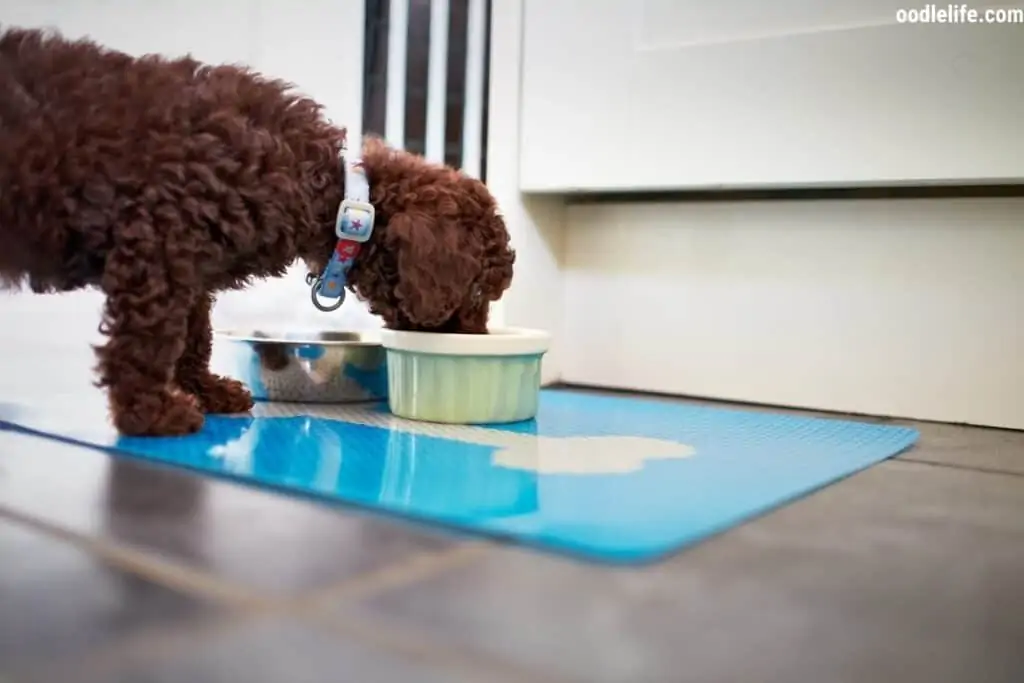
Treatment of Gastric Dilation and Volvulus
Every case of bloat and gastric dilation and volvulus will need to be seen by a vet. They will not resolve of their own accord and are very painful for your dog. If not treated quickly enough, then it can become fatal.
A vet may wish to X-ray to see how severe the bloating is. Treatment will usually involve some blood tests to make sure your dog is otherwise healthy. They may insert a tube down their esophagus to help release the air in hopes that the body can then work to process the food.
If they are too severe for this to help, treatment will often involve surgery to manually allow the stomach to release air and return it to its normal position if it has twisted.
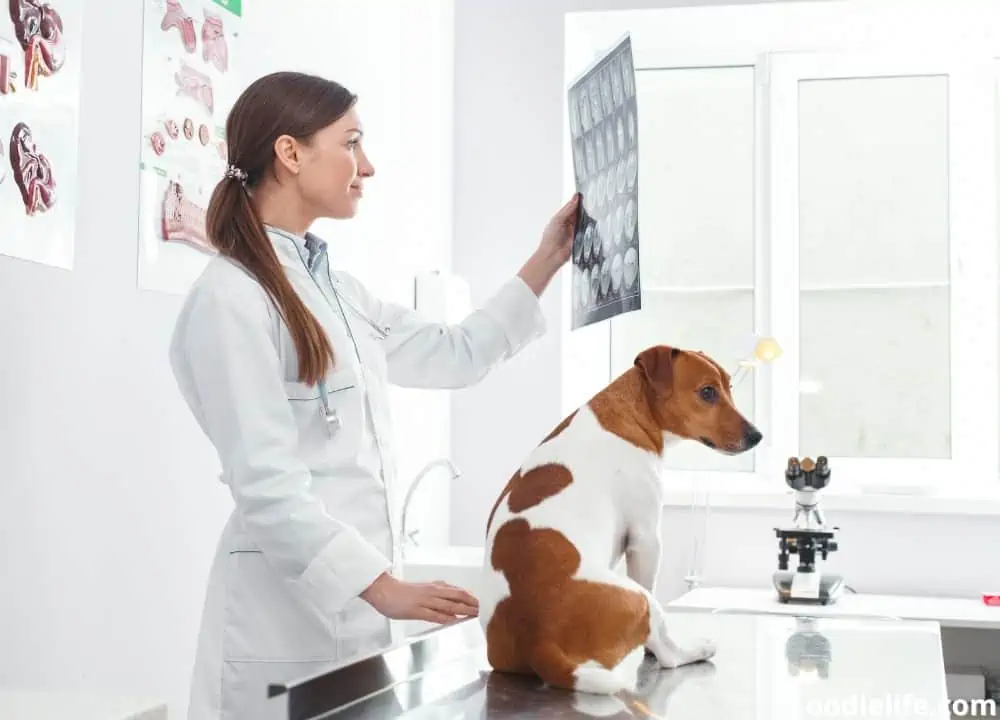
Is Your Dog at Risk of GDV?
Dogs most at risk of GDV are large breeds with barrel-shaped chests. Breeds like Great Danes, Dobermans, Boxers, and similarly shaped dogs are more at risk of GDV from a physical standpoint. That doesn’t mean that other breeds cannot get it although the larger they are the more at risk. Any dog is able to develop bloat and GDV.
If you are able to look into your dog’s family tree and do some research on the line and if any of their ancestors might have suffered from it then this would also be helpful. The easiest thing to do for your dog, even if they’re not highly at risk is to maintain safe feeding practices to at least minimize their chances of developing GDV.
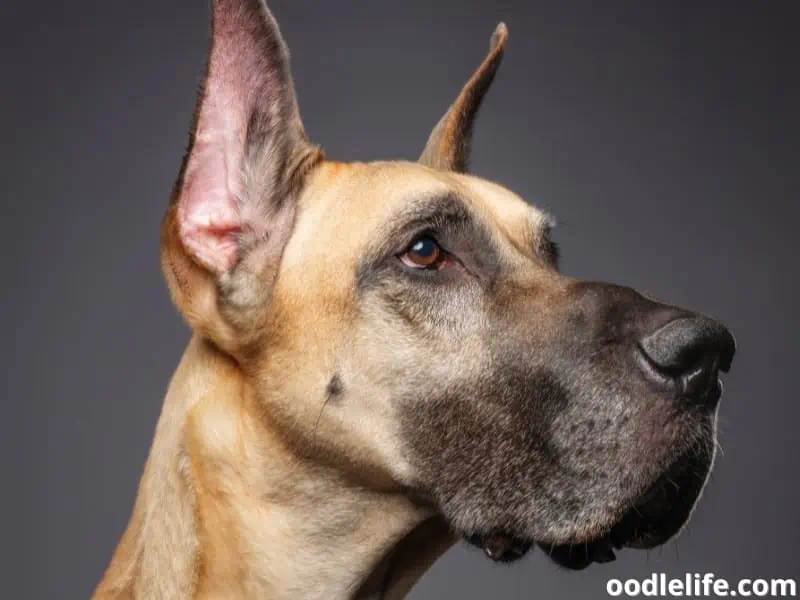
How to Feed Your Dog to Avoid Them Getting Unwell?
There is a general rule of thumb when feeding your dog around their walk times. You should not feed your dog for at least an hour before exercise and for half an hour after you get back from a work. This isn’t really the most strict rule but it’s more of an estimation and it’s flexible depending on your dog and its energy levels.
If you have a dog that just sticks to your side and you’re planning to do a relaxing lead walk with lots of sniffs, then feeding them an hour before their walk is great. If you know your dog better than that and know you’ll get dragged to the nearest park before you have to let them off the leash to let them burn off all of their extra energy.
Maybe your Greyhound enjoys just strolling at your side which might make you less concerned about bloat but there’s no saying when a case of the zoomies might hit or a squirrel might run part. It’s always better to play it safe than risk anything. I tend to wait at least two hours after feeding to walk my dogs even though some are smaller breeds and much lower risk, it doesn’t hurt to be safe.
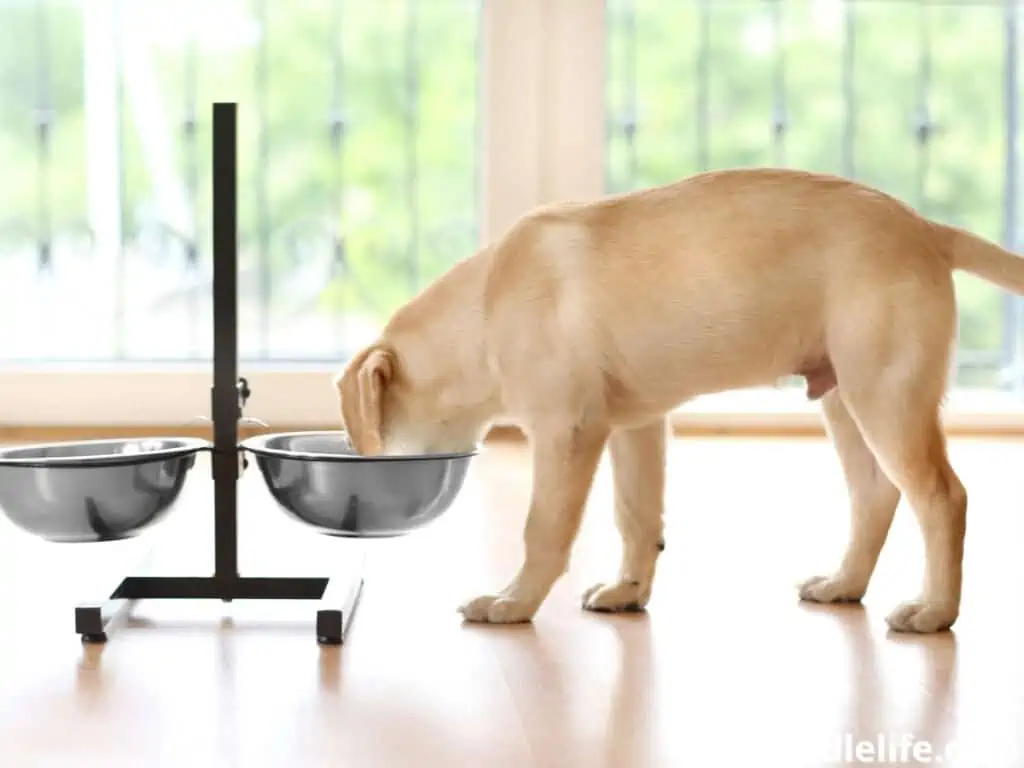
Conclusion
It doesn’t matter a great deal if you choose to feed your dog before or after their walk, it just matters when you feed them before or after their walk. Before their walk, they will need time to digest their food properly and after their walk, they will need time to settle down before feeding them so they’re not over-excited or panting and swallowing air as they eat.
One way of making sure your dog settles after meal time is if they’re crate trained, it’s the perfect time to encourage them to have a nap in there or cuddle with them on the couch to keep them quiet and content.